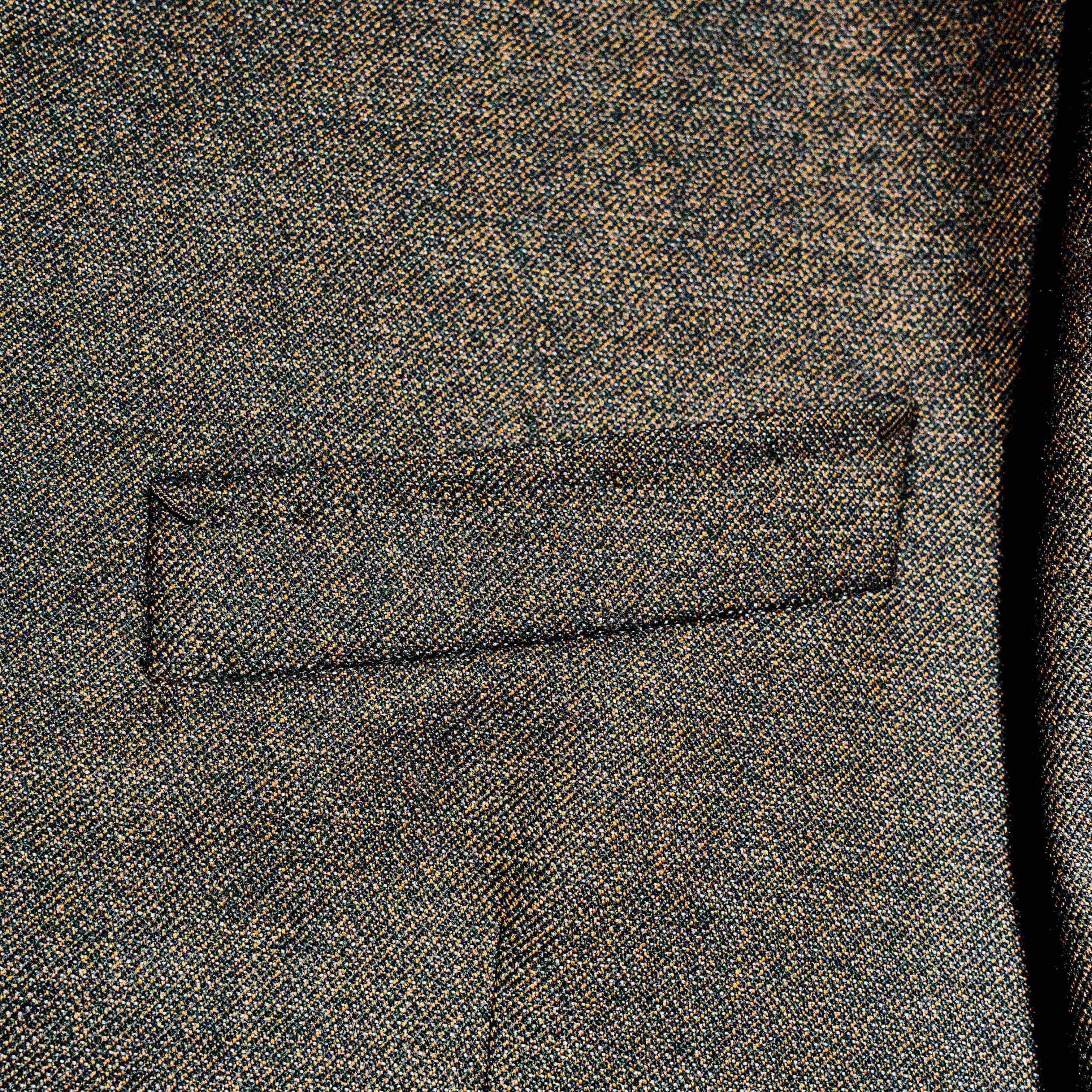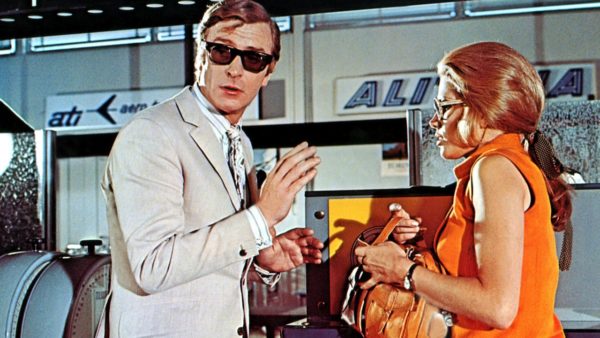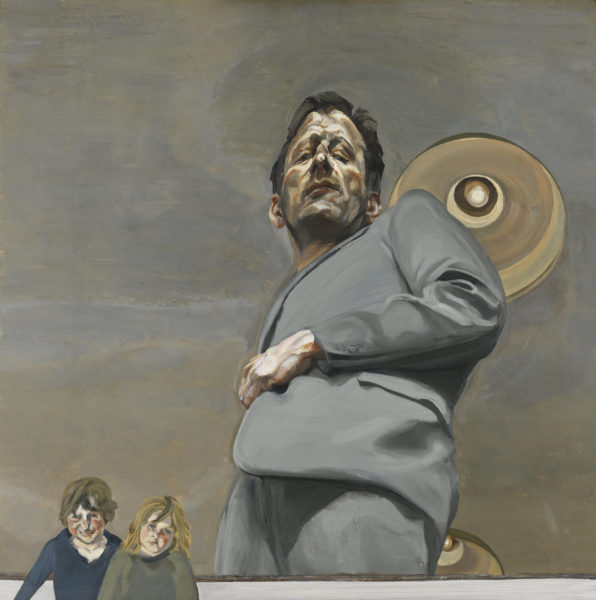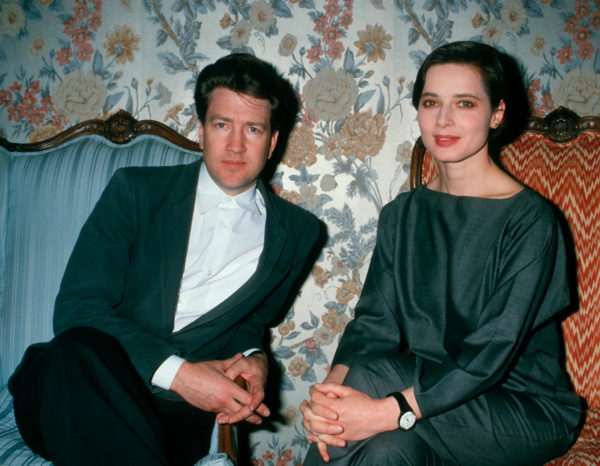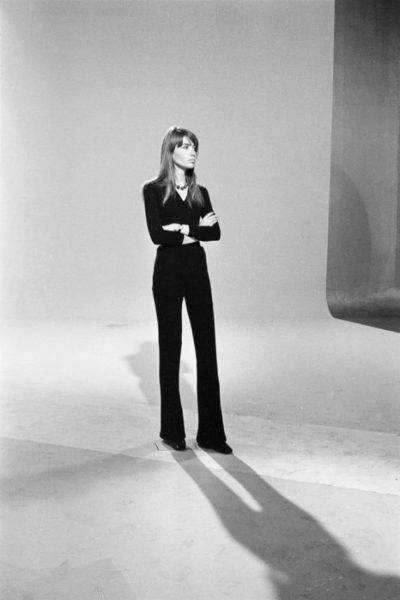With the exception of ancient Rome, where men carried small bags called “fobules” tied to their tunics, what we consider to be a pocket sewn into clothing did not exist before the 17th century. In the Middle Ages, people cut slits into their clothing to access bags worn underneath. It wasn’t until the Industrial Revolution that sewn-on pockets, and pockets hidden within the liningfabric that is used inside a garment More, became standard in clothing, driven by the practical need for easy access to items during work and travel. Today, there are many options for pocket designs. Those reflect formality, style, and practicality.
Starting at the top of a modern jacket, we find a pocket on the left upper chest. These are often welted chest pockets. Chest pockets were historically used to hold handkerchiefs. Being dirty, the handkerchief shouldn’t be mixed with other items stored in the hip pockets.
Lower on the jacket, there are the hip pockets. The hip pocket construction varies, and reflects formality, style, and function. The simplest form of hip pocket in construction is sewn onto the outside of a suit jacket using matching fabric. We call this, a patch pocket. Commonly found on workwear, hunting, and safari jackets, patch pockets can feature a flap and button for added security.
Jetted pockets, instead, are pouches inside the garment with a slit opening, giving a sleek appearance suitable for formal wear. The design likely originated with Edward VII’s tailors when the King requested a silk-lined jacket. There, the tailors noticed that pouches can easily be hidden between the main fabric, canvassing, and inner lining.
Another theory is that jetted pockets with a flap were meant to protect contents inside the pocket from rain and weather, with the flap tucked inside the pocket when indoors. The effect is a cleaner, flatter look. Flapped jetted pockets are a very common and versatile design choice. The flap can be hidden inside the pocket to create a slit opening, which is often suggestive of more formal occasions.
Originally designed for horse riding jackets, jetted pockets are sometimes “slanted”, i.e., angled downwards towards the back, for easier access during horse riding and liked for their slimming effect on the appearance of the jacket.
A good example of the practical origin of modern suit pockets is the ticket pocketsmall piped pocket with flap above the right pocket of a jac More, positioned above the main right hip pocket. Today this pocket is uncommon; only an aesthetic choice. Popular among horseback riders before the Industrial Revolution, ticket pockets allowed for quick access to coins at toll booths. As men began commuting to the city, these small pockets on suits became a practical feature for storing train tickets.

BRESSON, Robert, dir. Pickpocket. 1959. 73 min.
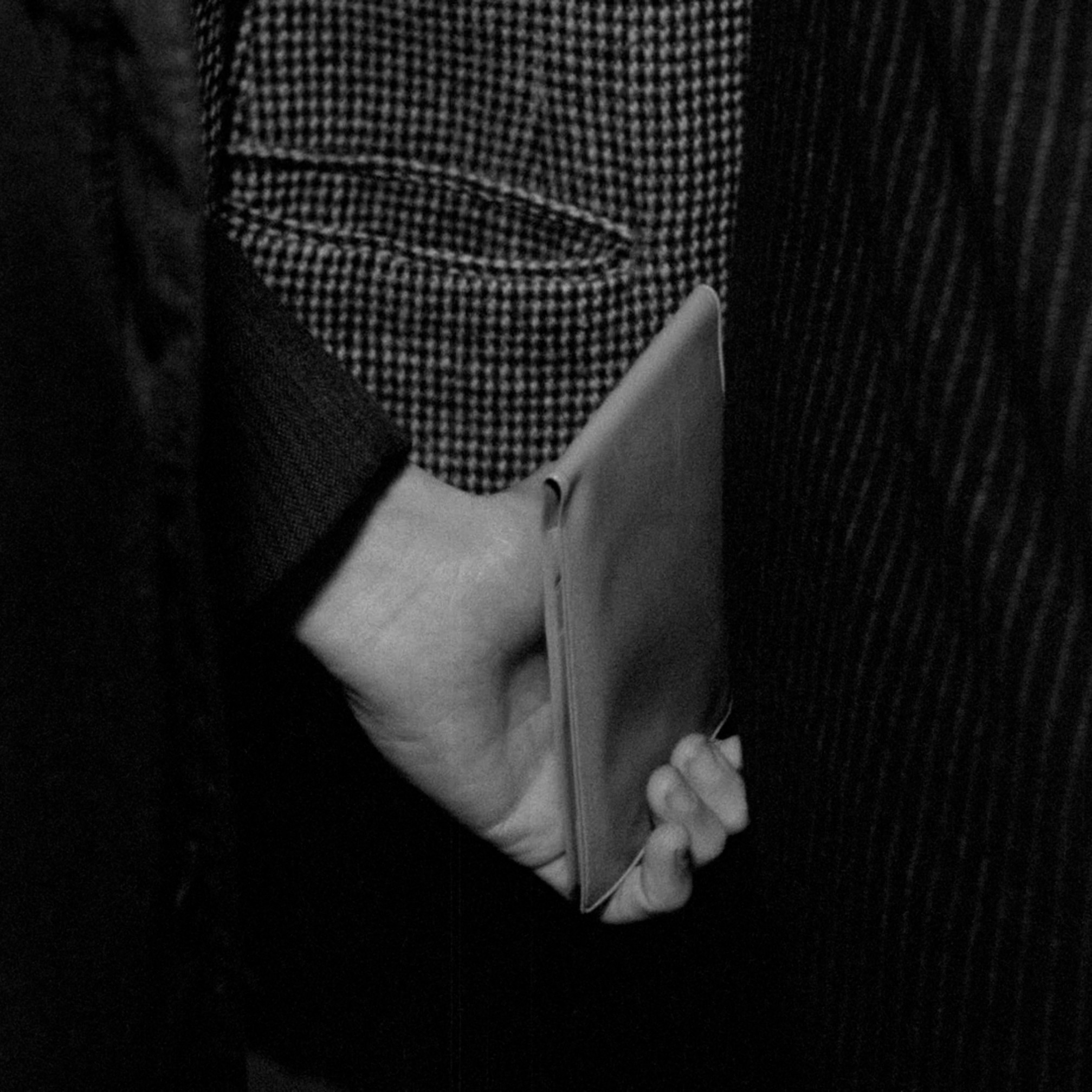
Right chest pocketsmall front left pocket located at armpit level - on a jacke More, right pen pocket. 2022.
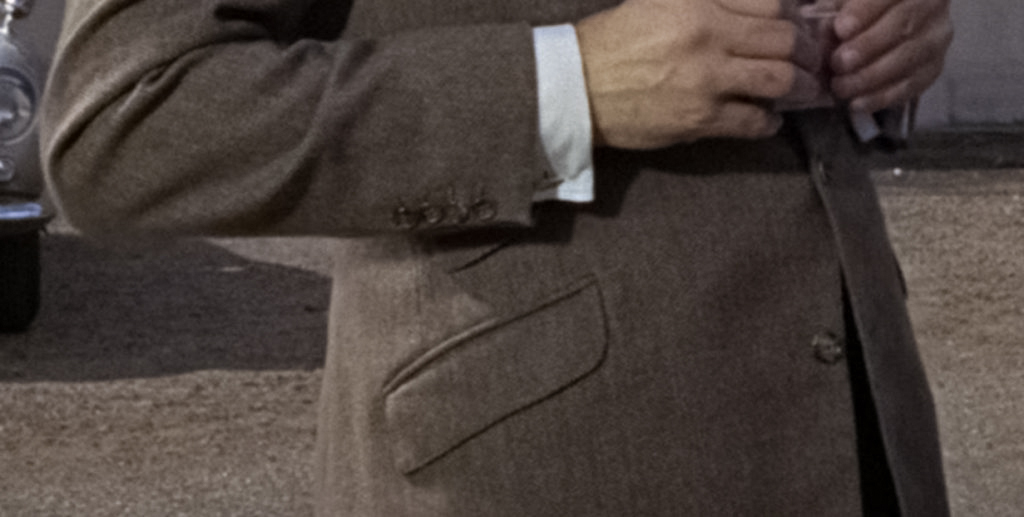
CONNERY, Sean, act. HAMILTON, Guy, dir. Gold Finger. 1964. 125 min.
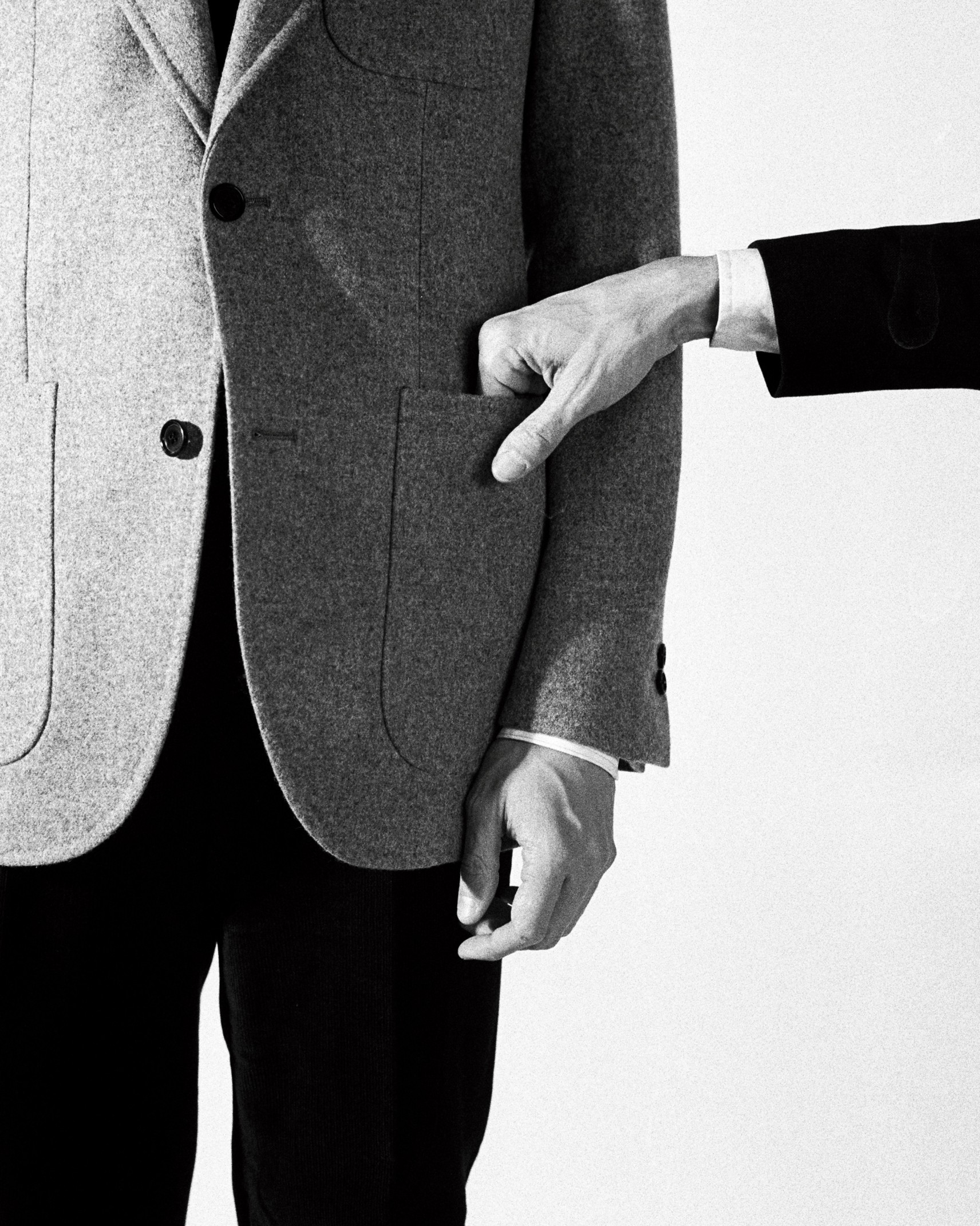
Patch pocket on left hip. Grey wool jacket. 2021.
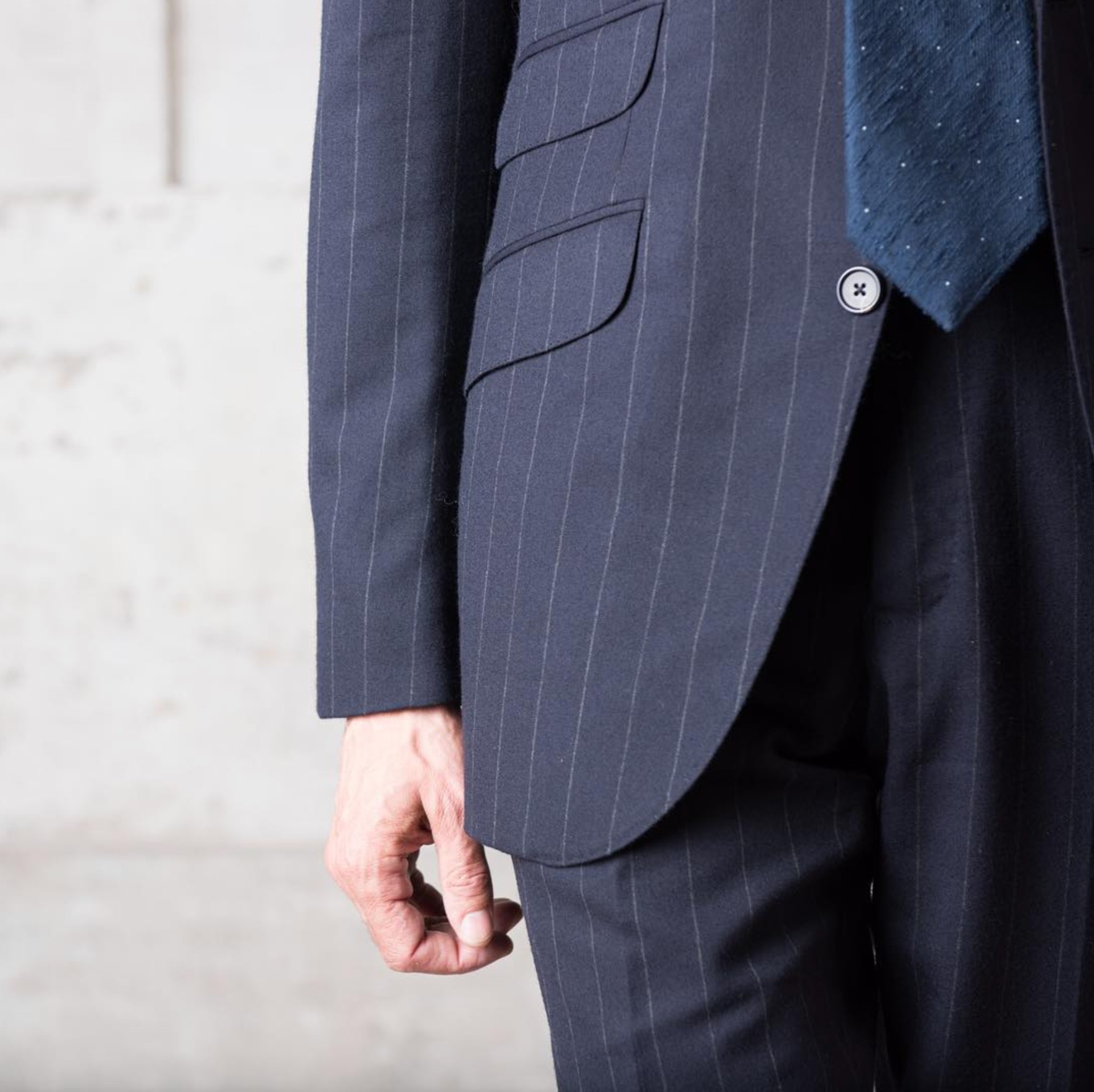
Slanted pockets with flap, ticket pocket with flap. Blue wool pinstripe suit. 2018.
- COTTON« Soft, but with weight. Relaxed, but never shapeless. It carries memory in its creases. »
- LUCIAN FREUD« from borrowed suits to bespoke tailoring, Freud’s fashion choices evolved with his art »
- DAVID LYNCH« The oddest of Americans, the most American of oddballs, Lynch was a man with a uniform. »
- THE FLARED TROUSER
